|
Introduction of the artist:
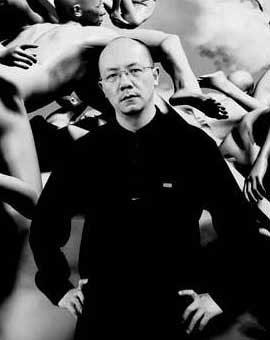
MIAO Xiaochun (China)
Born in 1964, Wuxi, Jiangsu. Lives and works in Beijing.
Selected
solo exhibitions: 2011 Beijing Handscrolls, Guardini Foundation, Berlin,
Germany; 2010 Macromania, Ludwig Museum, Koblenz, Germany; 2010 Miao Xiaochun –
Two Big Video Works, Today Art Museum, Beijing;
Selected group exhibitions:
2012 Arsenale 2012, The 1st Kyiv International Biennial of?Contemporary Art,
Kyiv, Ukraine; 2012 Future Pass, Wereldmuseum, Rotterdam, Netherlands; Taiwan
Museum of Fine Arts, Taichung, Taiwan; 2011The Global Contemporary. Art Worlds
after 1989, ZKM, Germany; 2011 the 54th Venice Biennale, Italy; 2011
Meta-Question: Back to the Museum Perse, 4th Guangzhou Triennial, China; 2011
The 5th Chengdu Biennale, Chengdu, China; 2010 A Fresh Look at Chinese
Landscapes, Galerie Moderne Chinesische Malerei des Museums für Asiatische
Kunst, Berlin; 2010 DIGIFESTA – Speed of Earth, Gwangju Museum of Art, South
Korea; 2009 Beijing Time, Casa Asia, Matadero Madrid; Santiago Art Museum,
Spain; 2009 Guangzhou Photo Biennial, Guangdong Museum of Art, Guangzhou,
China; 2008 Images in the Night, Le Grand Palais, Paris, France; 2008 Busan
Biennale, South Korea; 2007 China – Facing Reality, Museum of Modern Art Ludwig
Foundation Vienna, Austria and National Art Museum of China, Beijing; 2007 New
Directions from China China New Media Art, Plug.in, Basel, Switzerland.
An inquisitive approach to seeing has guided the artist in the development of
a more recent project, one rooted in “neo-cubism”. With new tools it has become
possible to fabricate a scene and view it from five angles – left, right,
front, back, and top – in turn projecting its accurate dimensions in the
form of a cube. In other words, the artist can construct a three dimensional
virtual reality. As Miao Xiaochun says, “One hundred years ago, cubists tried to
present different sides of an object on the same image, but they had to give up
‘accuracy’ very quickly for the sake of their new means of artistic expression.
Today, with digital media, cubism can be re-interpreted and
re-presented.”
Although technology will undoubtedly further develop – and at
an unimaginable pace – providing a range of new possibilities for visual
language and imaginative experimentation, it is not, and has never been, the
driving force of art. The range of possible imaginative modes of seeing
originate from visual curiosity, from a drive to see what the eye does not see,
to construct a non-existent nature out of reality.
Introduction of works:
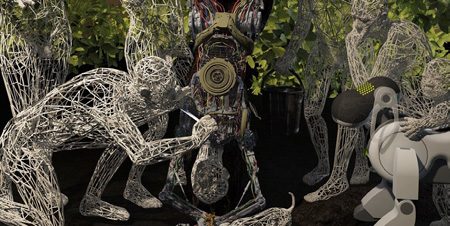
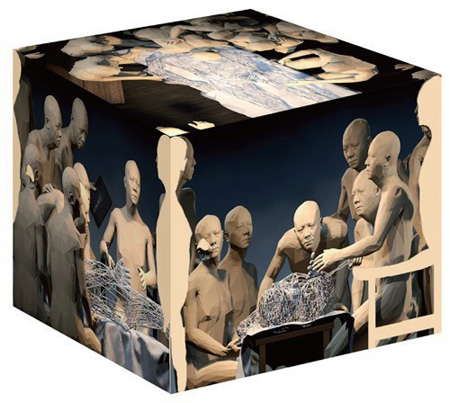

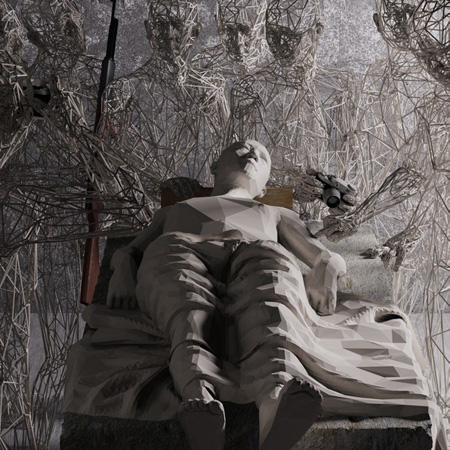
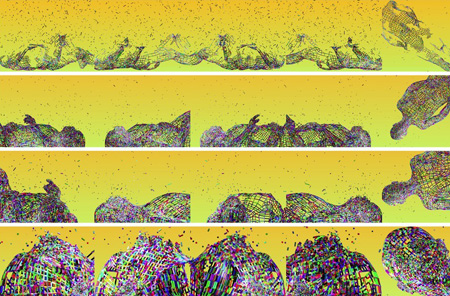
Neo-Cubism Projection
When we use virtual cameras to shoot the same scene from the left, the right,
the front, the behind and the top, and link those pictures together; then it
will be just like we extracted a cube out of this scene (objects that move to
this area seem to be cut). We know it is very difficult to form 90° angles
between one camera and another in reality when we use multiple cameras for
shooting. However, it is easy to do so with three-dimensional software; thus
when we project those five images shot by five virtual cameras from the left,
right, front, behind and top to the same cube, those five images can be linked
accurately to form a cube by projection.
One hundred years ago, cubists tried to present all sides of an object on the
same image; but they gave up accuracy very quickly and devoted themselves into a
completely new way of expression; one hundred years later, with the help of new
technology, we have more than one way of “cubic” expressions. Maybe the key of
this issue is: how can this new technology be transformed into a new kind of
artistic way of expression. |

